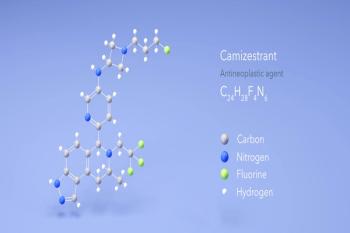
Innovations in SMA Treatment: The Last Decade and Beyond
The recent availability of 3 FDA-approved treatments for patients with spinal muscular atrophy (SMA) has dramatically altered patient outcomes and provided a wealth of new avenues for SMA research.
A decade ago, a diagnosis of
While severity can range drastically depending on the age of onset, a diagnosis of infantile-onset SMA (type 1) has a life expectancy of 2 years at most when untreated, and types manifesting later on can progress to forms of disability. Combatting SMA has been a challenging endeavor; however, the recent development of 3 novel, now FDA-approved treatments—nusinersen, onasemnogene abeparvovec, and risdiplam—has significantly altered the course of SMA. Still, research continues to work toward improving outcomes in these patients.
SMA is caused by disruptions in the survival motor neuron 1 and 2 (SMN1, SMN2) genes that largely lead to the loss of SMN1 entirely and the exclusion of exon 7 in genetic transcripts. These genes are duplicated along chromosome 5 (5q) and produce the survival motor neuron (SMN) protein, which is essential for healthy motor neuron functioning. In the absence of SMN1, increased copies of SMN2 have been indicated in milder SMA phenotypes due to the increased availability of SMN protein; however, progressive proximal muscle weakness still manifests a result of this genetic circumstance.1
Alexander Fay, MD, PhD, traced the first mentions of SMA to the 1890s by the eponym of Werdnig-Hoffman disease. Over the next 100 years, SMA would be characterized under eponyms such as Kugelber-Welander disease and Dubovitz disease, named after physicians describing SMA across a range of severities. It was not until the 1990s that Judith Melki and Thomas Conrad Gilliam began connecting the genetic sequencing of SMA in all its forms to the 5q locus.1
At first, SMA was a condition likened to muscular dystrophy, and symptoms were described according to muscular weakness or deficiencies that physicians saw. As scientific advancements were made, more invasive procedures such as muscle biopsies or electrodiagnostic studies were used to diagnose patients before—in no small part to the discovery of Melki and Gilliam—genetic screening emerged as a new standard.1
Now, SMA is divided into phenotypes ranging from 0-4. Type 0 is noticed at or before birth and is the most severe form of SMA. These infants lack both copies of exons 7 and 8 of the SMN1 gene and exhibit less fetal movement and movement at birth. The life expectancy for those untreated is less than 3 months.
Type 1 is an infantile-onset disease that is typically diagnosed in the first 6 months of life. This subtype is the most prevalent form of SMA, constituting 60% of cases. Weakness of the proximal muscles is present at onset; however, as the disease progresses, all muscles are affected, motor functioning scores do not improve, and sitting independently is not achieved. This progression also affects the respiratory tract, as patients demonstrate a loss of ribcage volume, bell-shaped chests, weakened intercostal muscles, and even reduced rates of alveoli to bronchi or bronchioles. Interestingly, the diaphragm is commonly spared from this progression.
Type 2 is a less-degenerative form compared with type 1. Motor functioning and respiratory impairment declines more slowly; however, disease progression can still be life-limiting as restrictive lung disease or worsening scoliosis develop in individuals. Disease onset generally occurs between 6-18 months, and contractures and polyminimyoclonus of the hands are frequently seen. Increased copies of the SMN protein backup SMN2 gene typically correlated with better motor functioning for these individuals, and the majority of them survive to adulthood.
Type 3 can present before 3 years of age (type 3A) or after (type 3B). A typical lifespan is expected in these individuals, and they may even achieve ambulation in 1-4 years. A person’s ambulatory gait can improve through 6 years, but then is expected to decline over the course of their life—especially throughout puberty, which is theorized to be associated with weight gain in this time. The strength of one’s upper extremities as well as their respiratory function also tends to decline over time, especially in cases where a loss of ambulation occurs. A study conducted by Lusakowska et al. observed that that 80% of those with type 3 experienced ambulation loss after 10 years of disease duration, nearly 70% after 20 years, and just over 61% after 30 years.5
Type 4 is the least severe form of SMA and appears in adulthood. This subtype is also the least prevalent, only constituting 5% of cases. Normal lifespans, achievement of childhood motor milestones, and continued ambulation are expected. Ambulation, if lost, generally occurs after 50 years of age. Other onset symptoms can include fatigue and proximal weakness, as well as some polyminimyoclonus of the fingers. Look to Table 1 for additional features of these SMA subtypes.
A New Age of Treatments for SMA
In 2016, nusinersen became the first disease-modifying drug approved by the FDA for the treatment of patients with SMA. The availability of this groundbreaking treatment was soon followed by the approvals of onasemnogene abeparvovec in 2019 and risdipalm in 2020.
These medications exploit the unique genetics of SMA to slow disease progression and have demonstrated the ability to prolong life expectancy when initiated before the onset of an individual’s disease.
Alex Fay, MD, PhD, a pediatric neurologist and neuromuscular specialist at UCSF Benioff Children's Hospitals whose research focuses on the genetics of childhood-onset neuromuscular disorders, details the underlying mechanisms of these treatments below, and a concise comparison of these medications can be seen in Table 2.
Pre-symptomatic intervention has been associated with improved treatment outcomes in both infant and adult patients with SMA. For this reason, the emergence of genetic screening has been a life-altering tool in the advancements of SMA treatment, especially in cases of more severe disease that can onset at or before birth. An important aspect of this screening is nucleic acid extraction; however, steps linked to this process can be time consuming, tedious, expensive, and require certain equipment. Improving this procedure is another area of opportunity for advancing SMA treatment that can provide significant benefits to affected patients and families.
As genetic screening provides numerous benefits for identifying these patients but can pose logistical challenges, increasing accessibility of screening is an area of focus in SMA research. For example, Kubar et al. detailed a 2-step method for the identification of exon 7 deletion of SMN1 that can be used anywhere with real-time polymerase chain reaction (PCR) equipment in a recent study. In their method, dried blood samples are directly plugged into PCR tests; their studies have demonstrated great efficacy with this process without the need for nucleic acid extraction.2
Studies on the effects of nusinersen treatment on patients with SMA have continued to yield promising results. Respiratory analyses and the impacts of nusinersen have been studied in adults with SMA types 2 and 3. In a study conducted by Freigang et al., diaphragm ultrasound imaging (DUI) was used to monitor respiratory function as nusinersen was administered. Their analysis validated previous findings that suggested diaphragm functioning is less affected by SMN1 malfunction and deteriorates at a slower rate.4
Furthermore, as diaphragm thickness fractions were measured, researchers found that variations in thickness may be indicative of diaphragmatic dysfunction, but they do not correlate with a patient’s atrophy. Nusinersen intervention led to patients experiencing better respiratory outcomes in these cases that included improved thickening and excursion. Differences in spirometer parameters were also detected between patients with type 2 and 3; however, these differences were not witness in their DUIs, further indicating that the ventilatory impairment was linked to respiratory muscles rather than the diaphragm itself.4
Nusinersen has also demonstrated benefits for other outcomes of SMA, including its impacts on bone health. Bone mineral density and bone metabolism have been observably poorer in children in adolescents with SMA types 2 and 3.
In a study conducted by Kroksmark et al. that investigated these effects, nusinersen was approved in the middle of their analysis, and some of their patients were able to begin intervention. At the end of the study period, those who had been administered nusinersen exhibited slowed progression in bone health deterioration compared with those who went untreated.3
As research around combatting the progression of SMA continues, one of the challenges lying ahead includes the need to create affordable forms of treatment.
The financial burden of SMA creates a huge barrier for patients and their families seeking adequate care. Nusinersen costs approximately $750,000 in the first year of treatment before dropping to $375,000 per year; onasemnogene abeparvovec costs approximately $2.125 million; risdipalm can range from $100,000-$340,000 per year.
As this obstacle is addressed moving forward, Fay took the time later in his interview to stress the importance of pre-symptomatic intervention as a means to maximize treatment value.
“If you can treat in the pre-symptomatic phase, then you can really avoid a lot of the disability that comes with SMA," Fay said. "It's a different story in the later onset disease where the drugs cost the same, but the magnitude of the beneficial effects of the drugs is not as great.”
The last decade in SMA research has significantly transformed the treatment landscape for these patients. Now that life-saving and life-altering medications are available, researchers will have the opportunity to expand these benefits as patients with SMA live longer and with better outcomes from novel agents.
References
1. Fay A. Spinal muscular atrophy: a (now) treatable neurodegenerative disease. Pediatr Clin North Am. 2023;70(5):963-977. doi:10.1016/j.pcl.2023.06.002
2. Kubar A, Temel SH, Beken S, et al. A direct test in spinal muscular atrophy screening for DBS. Mol Genet Genomic Med. 2023;e2270. doi:10.1002/mgg3.2270
3. Kroksmark AK, Alberg L, Tulinius M, Magnusson P, Söderpalm AC. Low bone mineral density and reduced bone-specific alkaline phosphatase in 5q spinal muscular atrophy type 2 and type 3: A 2-year prospective study of bone health. Acta Paediatr. Published online September 15, 2023. doi:10.1111/apa.16974
4. Freigang M, Langner S, Hermann A, Günther R. Impaired diaphragmatic motility in treatment-naïve adult patients with spinal muscular atrophy improved during nusinersen treatment. Muscle Nerve. 2023;68(3):278-285. doi:10.1002/mus.27938
5. Lusakowska A, Jedrzejowska M, Kaminska A, Janiszewska K, Grochowski P, Zimowski J, Sierdzinski J, Kostera-Pruszczyk A. Observation of the natural course of type 3 spinal muscular atrophy: data from the polish registry of spinal muscular atrophy. Orphanet J Rare Dis. 2021;16(1):150. doi:10.1186/s13023-021-01771-y
Newsletter
Stay ahead of policy, cost, and value—subscribe to AJMC for expert insights at the intersection of clinical care and health economics.









































